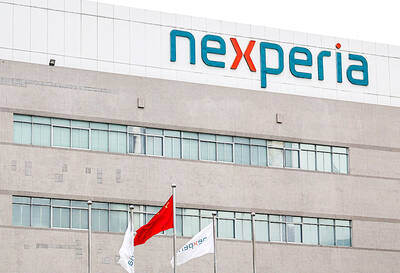Pilots working at Australian airline Qantas said yesterday that they had offered to increase their flying time by 10 percent in exchange for a greater share of the carrier's record profits.
The airline is one of the most profitable in the world and in August reported that annual net profit had surged 50 percent to a record A$719.4 million (US$635 million) on the previous year.
"There's a range of productivity options that are on the table for pilots; part of that involves an increase in hours," said Peter Sommerville, general manager of the Australian and International Pilots Association.
He said that while such an arrangement would not always guarantee pilots the same benefits, it would strengthen ties between pilots and the carrier.
"There will be good years and there will be not so good years," Sommerville said. "It's not just access potentially to some of those gains, the theme of this is linkage to the future of Qantas to some extent."
Sommerville said that passenger safety would not be compromised by the deal -- with staff still adhering to regulations that prevent international pilots from flying more than 900 hours a year.
"We don't go near that limit at the present time so there's plenty of room for that," he said.
Qantas and unions representing long-haul cabin crew this week hammered out a deal under which the carrier would increase work hours of new staff by 30 percent while cutting their wages by 25 percent.
Qantas management has said the move was necessary to remain competitive against foreign flyers such as Emirates and Singapore Airlines.

JITTERS: Nexperia has a 20 percent market share for chips powering simpler features such as window controls, and changing supply chains could take years European carmakers are looking into ways to scratch components made with parts from China, spooked by deepening geopolitical spats playing out through chipmaker Nexperia BV and Beijing’s export controls on rare earths. To protect operations from trade ructions, several automakers are pushing major suppliers to find permanent alternatives to Chinese semiconductors, people familiar with the matter said. The industry is considering broader changes to its supply chain to adapt to shifting geopolitics, Europe’s main suppliers lobby CLEPA head Matthias Zink said. “We had some indications already — questions like: ‘How can you supply me without this dependency on China?’” Zink, who also

Taiwan Semiconductor Manufacturing Co (TSMC, 台積電) received about NT$147 billion (US$4.71 billion) in subsidies from the US, Japanese, German and Chinese governments over the past two years for its global expansion. Financial data compiled by the world’s largest contract chipmaker showed the company secured NT$4.77 billion in subsidies from the governments in the third quarter, bringing the total for the first three quarters of the year to about NT$71.9 billion. Along with the NT$75.16 billion in financial aid TSMC received last year, the chipmaker obtained NT$147 billion in subsidies in almost two years, the data showed. The subsidies received by its subsidiaries —

The number of Taiwanese working in the US rose to a record high of 137,000 last year, driven largely by Taiwan Semiconductor Manufacturing Co’s (TSMC, 台積電) rapid overseas expansion, according to government data released yesterday. A total of 666,000 Taiwanese nationals were employed abroad last year, an increase of 45,000 from 2023 and the highest level since the COVID-19 pandemic, data from the Directorate-General of Budget, Accounting and Statistics (DGBAS) showed. Overseas employment had steadily increased between 2009 and 2019, peaking at 739,000, before plunging to 319,000 in 2021 amid US-China trade tensions, global supply chain shifts, reshoring by Taiwanese companies and

At least US$50 million for the freedom of an Emirati sheikh: That is the king’s ransom paid two weeks ago to militants linked to al-Qaeda who are pushing to topple the Malian government and impose Islamic law. Alongside a crippling fuel blockade, the Group for the Support of Islam and Muslims (JNIM) has made kidnapping wealthy foreigners for a ransom a pillar of its strategy of “economic jihad.” Its goal: Oust the junta, which has struggled to contain Mali’s decade-long insurgency since taking power following back-to-back coups in 2020 and 2021, by scaring away investors and paralyzing the west African country’s economy.